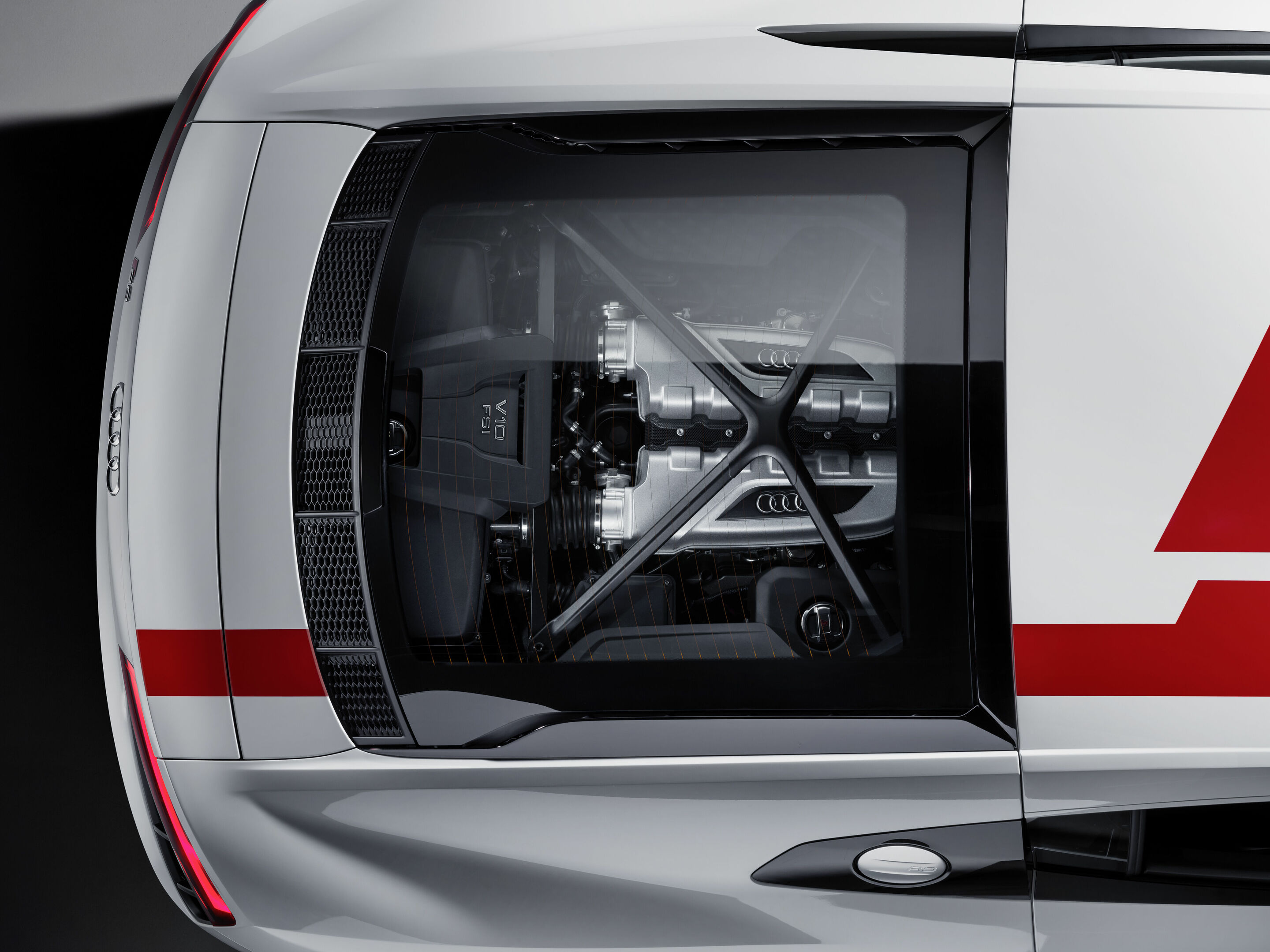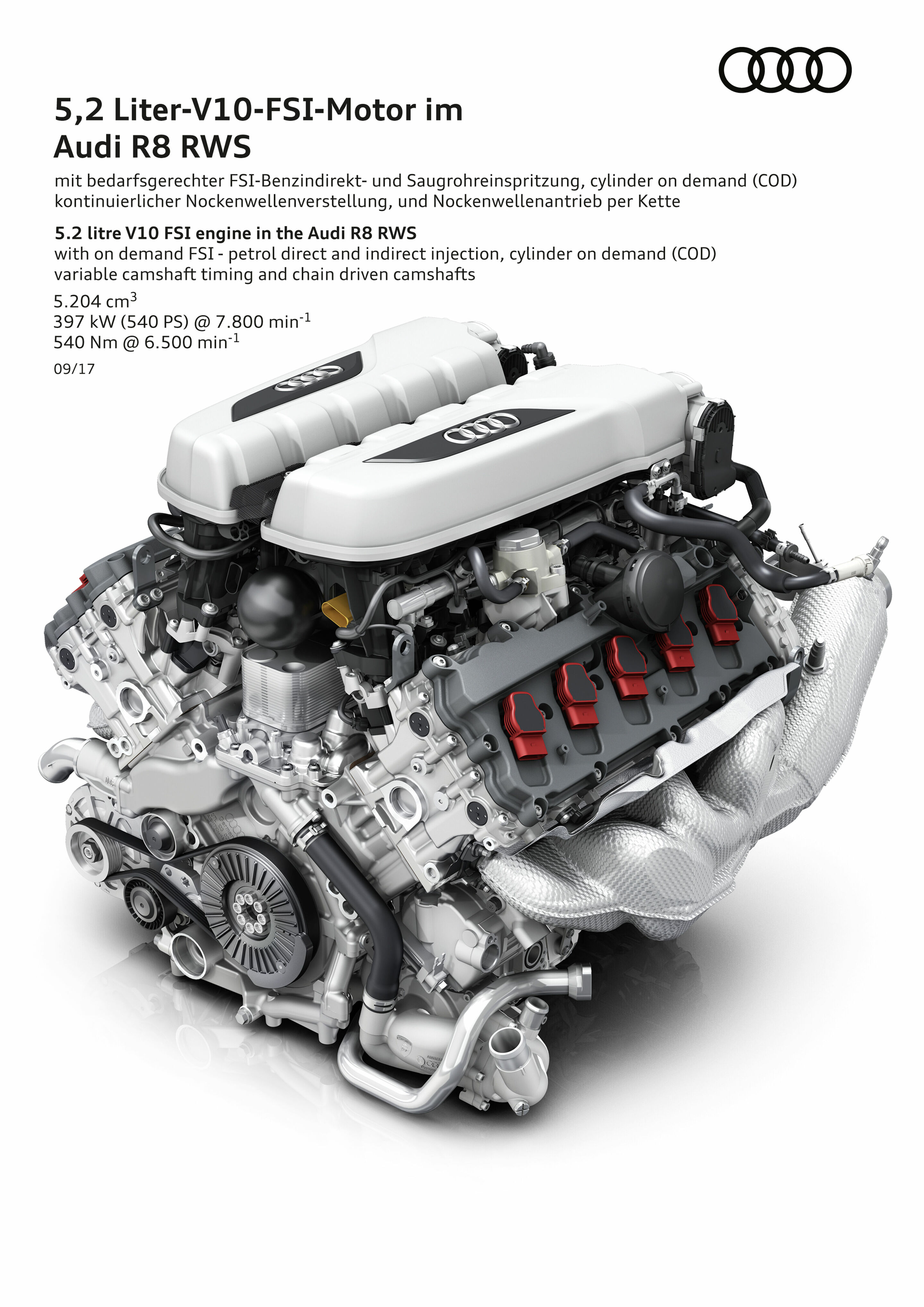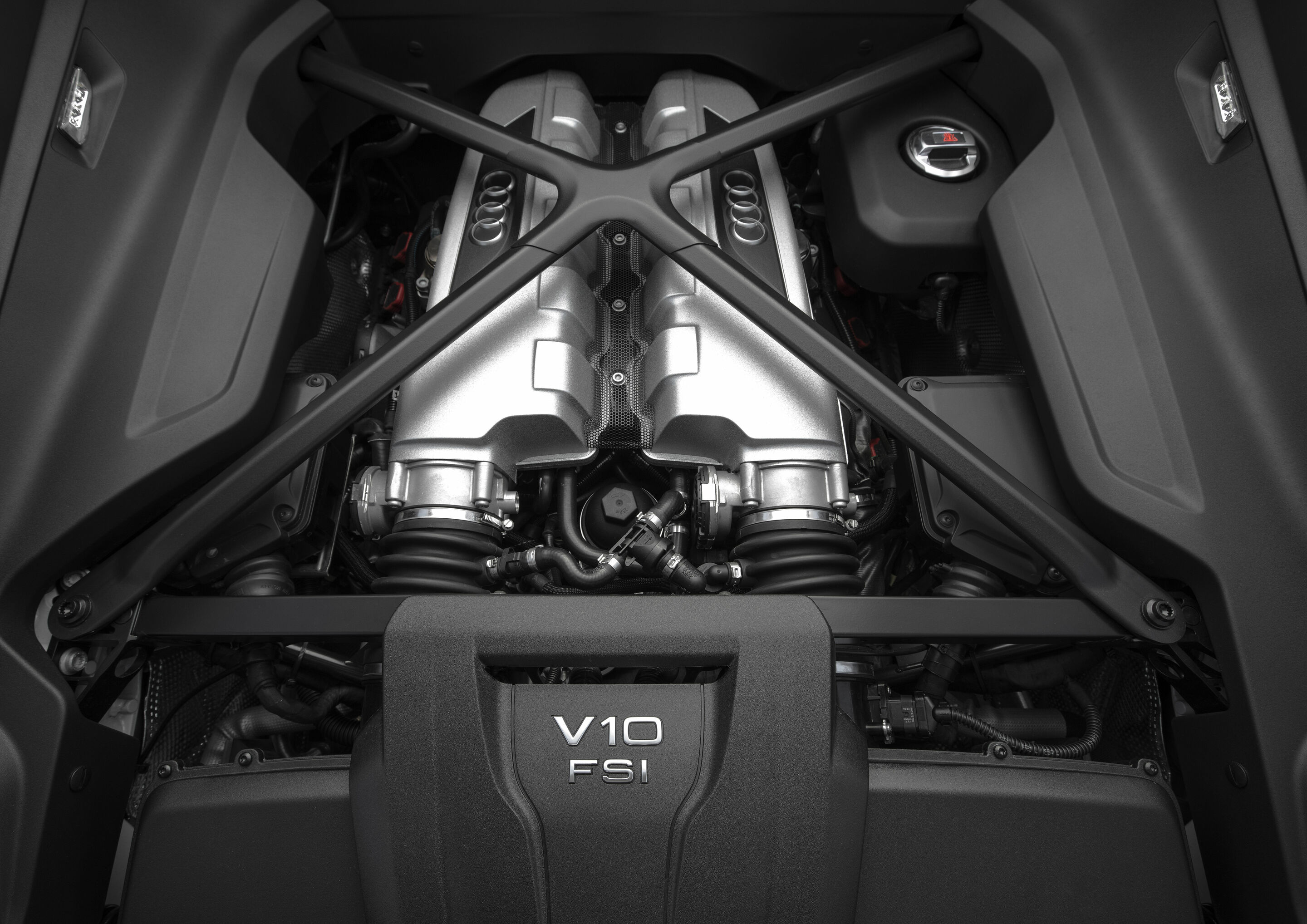Engine
Back to overviewThe V10 mid-mounted engine of the Audi R8 V10 RWS delivers 397 kW (540 hp). It delivers its maximum torque of 540 Nm (398.3 lb-ft) at 6,500 revolutions per minute. The 5.2 FSI engine accelerates the coupe from 0 to 100 km/h (0 to 62 mph) in 3.7 seconds (Spyder: 3.8 seconds) and achieves a top speed of 320 km/h (198.8 mph) (Spyder: 318 km/h [197.6 mph]). With the roof closed, the average fuel consumption is 12.4 liters per 100 kilometers (19.0 US mpg) (283 grams CO2 per kilometer [455.4 g/mi]), and with the roof open it is 12.6 liters (18.7 US mpg) (286 grams CO2 per kilometer [460 g/mi]).
| Audi R8 V10 RWS | 5.2 FSI | ||
| V10 cylinder gasoline engine with combined | |||
| Displacement in ccm | 5,204 | ||
| Max. power in kW (hp) at rpm | 397 (540) at 7,800 | ||
| Max. torque in Nm (lb-ft) at rpm | 540 (398.3) at 6,500 | ||
| Maximum speed in km/h (mph) | 320 (198.8) (Spyder: 318 (197.6)) | ||
| Acceleration 0 to 100 km/h in s (0 to 62 mph) | 3.7 (198.8) (Spyder: 3.8 (197.6)) | ||
| Combined consumption in l/100 km (US mpg) | 12.4 (198.8) (Spyder: 12.6 (197.6)) | ||
| Combined CO2 emissions in g/km (g/mi) | 286–283 (460.3–455.4) | ||
| Drive | Rear-wheel drive | ||
| Transmission | 7-speed S tronic transmission |
V10 power: Immense power and immediate responsiveness
The immediately responsive 5.2 FSI is a high-performance engine that is systematically designed for high speeds. As soon as the engine is started, it revs to 2,500 rpm in fractions of a second. When under load, the naturally aspirated ten-cylinder engine develops its own unmistakable sound – a throaty snarling and roaring. The firing sequence is 1 – 6 – 5 – 10 – 2 – 7 – 3 – 8 – 4 – 9.
The crankshaft is designed as a common pin shaft: The connecting rods of the opposing pistons engage with a common crankpin, which results in alternating firing intervals of 54 and 90 degrees. This sequence is a key factor in producing the unique, motorsport-like sound.
The V10, which is produced in the Hungarian Győr engine plant, is extremely compact. The engine oil temperature is regulated by its own radiator, and comes from a dry sump. Born in motorsport, this principle allows an extremely low installation position of the engine, which ensures a low center of gravity. The pump module employs multiple suction stages, thus ensuring lubrication under all conditions – even with lateral acceleration in the 1.5 g range that the R8 V10 RWS (combined fuel consumption in l/100 km: 12.6–12.4 [18.7–19.0 US mpg], combined CO2 emissions in g/km: 286–283 [460.3–455.4 g/mi]) can achieve.
Special combustion process: FSI plus MPI (Multipoint Injection)
In addition to direct injection into the combustion chambers (FSI), the V10 uses an additional injection into the intake manifold (MPI). Two newly developed control units share the complex calculation work in accordance with the master-slave concept and control the dual injection. Only the MPI injection is used in the partial load range. The fuel evaporates very well thanks to the strong vacuum in the intake manifold, which results in clean combustion. In the medium load range, the intake manifold injection and direct injection share the work equally. At the full load range, around 85% of the fuel injection is performed by the FSI system at a pressure of up to 200 bar. The directly injected fuel swirls intensively. This cools the walls of the combustion chambers and thus reduces knocking. The remaining MPI share increases the filling ability and contributes to the increased performance.
The cylinder on demand (COD) technology considerably increases efficiency. At low to medium loads, it shuts down the cylinders of the left or right bank in the upper four gears by deactivating the injection and ignition.
In addition to the COD system, the 5.2 FSI features other efficiency technologies. If the “comfort” mode is active in the Audi drive selectdynamic handling system – which is fitted as standard – and the speed is over 55 km/h (34.2 mph), the 7-speed S tronic switches to freewheel when the gas pedal is released. It then opens both clutches, and the high-performance sports car coasts. Immediately before pulling up, the engine’s start/stop system completely switches off and the subsequent restart is smooth.
All terms marked in the text are explained in detail in the technology lexicon at www.audi-mediacenter.com/en/technology-lexicon.
The equipment, data and prices specified in this document refer to the model range offered in Germany. Subject to change without notice; errors and omissions excepted.


